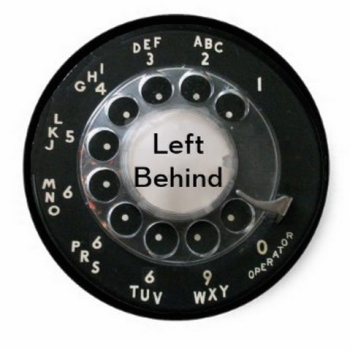“You shall not cheat in measuring length, weight, or quantity. You shall have honest balances, honest weights, an honest ephah, and an honest hin.” — Leviticus 19:35-36
“You shall not have in your bag two kinds of weights, large and small. You shall not have in your house two kinds of measures, large and small. You shall have only a full and honest weight; you shall have only a full and honest measure.” — Deuteronomy 25:13-15
“Differing weights are an abomination to the Lord, and false scales are not good.” — Proverbs 20:23
“Can I overlook the treasures of wickedness in the house of the wicked, and the scant measure that is accursed? Can I tolerate wicked scales and a bag of dishonest weights? Your wealthy are full of violence … with tongues of deceit in their mouths.” — Micah 6:10-12
So you’ve paid for your merchandise at the grocery store or the drive-through or the Big Box. Your product is in the bag and you’re ready to go. But you’re not done yet.
There’s also homework.
The checkout clerk or drive-through worker or Uber driver will awkwardly ask that you fill out a survey. In some few places, they’ll make this easy, with the survey popping up right there on the checkout screen or the app you’re already using to pay for your purchase. But usually this homework assignment involves actual homework, dialing an 800-number and dealing with an automated menu of choices, or else finding a URL at the bottom of your footlong thermal paper receipt and going online and typing in the microprinted and smudged 40-digit activation and access code there next to it.
 Once you arrive at the survey, though, the rest of this homework assignment is pretty easy. It asks you to rate your shopping experience in a variety of ways on a scale of 1 to 5. The answers may or may not be numbered 1 to 5. They might just use a strongly disagree-disagree-neutral-agree-strongly agree spectrum instead, but that’s still a scale of 1 to 5.
Once you arrive at the survey, though, the rest of this homework assignment is pretty easy. It asks you to rate your shopping experience in a variety of ways on a scale of 1 to 5. The answers may or may not be numbered 1 to 5. They might just use a strongly disagree-disagree-neutral-agree-strongly agree spectrum instead, but that’s still a scale of 1 to 5.
Five is the best. One is the worst.
But 2 is also the worst. And so is 3. And so is 4. Everything other than a 5 is the worst. This is corporate math, and in corporate math, four equals zero.
This confuses customers. They’re usually accustomed to real math, and in real math, different numbers mean different things. In real math, 4 is higher than 1. A score of 4, they imagine, must be pretty good — second-best and just one away from the very best.
And so the clerk, who is already dealing with the unpleasant task of assigning customers unpaid homework, now has the additional and frankly impossible task of explaining corporate math to the customer. There is an art to doing this, one that allows for a measure of tact that does not involve directly indicting one’s bosses for all the sleazy, dishonest, confused and confusing aspects of their preferred corporate math. But no matter how artfully expressed it may be, the message blares through.
CLERK: If you’re pleased with our service, please give us all 5s.
CUSTOMER: You were very helpful. At least a 4.
CLERK: On this survey, a 4 is a failing score.
CUSTOMER: (brief look of puzzlement)
CLERK: (unspoken, expressed in a glance) Yes. Our bosses are assholes, and also not very bright. They prefer punitive metrics over any system that might provide useful and useable customer data.
CUSTOMER: (unspoken, expressed in a return glance) Ah. I’m so sorry. My bosses are the same way.
And so, with every purchase and every transaction, you are invited and required to participate in gaming the stats. You are asked to distinguish between the actual meaning of numbers and the perversion of their meaning through corporate math. You are asked to distinguish between the purported significance of corporate metrics and their actual significance in practice. You are asked questions in a language of lies and are thus forced to respond in kind.
But don’t worry if all of this seems complicated and ethically murky. It doesn’t have to be. Your job is simply to give all 5s. To everyone, everywhere, every time.
This is your task because it is the only honest answer available to an honest person. Because 4≠0. Because differing weights are an abomination and false scales are not good. Because your wealthy are full of violence with tongues of deceit in their mouths and bags full of dishonest weights.
You cannot give a “4,” because there is no real and honest 4 available to give. Nor is there a 3, a 2, or a 1. Those are all misleading symbols that do not mean what they appear to mean or what they ought to mean. To give a 4 is, according to the corporate math governing these surveys, to give a zero. (The survey is not honest enough to admit that a zero is a possible answer, let alone honest enough to tell you that a zero is how it records four out of five possible and apparently different answers.)
The numbers here cannot be trusted to mean what they appear to mean. The scores, metrics, symbols, and even the substance of the questions cannot be trusted. And because of that, you cannot trust your own answer to mean what you desire or intend it to mean, unless you accept the twisted rules of this twisted game. Those rules say that a 5 is the only acceptable answer to receive and thus, for you, a 5 becomes the only acceptable answer to give.
Let me provide a real-world example. I recently purchased a six-pack of ankle socks from a local discount retailer (because my wife and daughters love me and thus do not permit me to wear crew-length socks with shorts in the summer). The checkout line was very, very long because three of the four registers lining the front window were unattended and because most customers were buying a lot more than one bag of ankle socks. The lone checkout clerk, her name tag said “Angela,” requested “back-up”several times, but no one arrived to provide it. Angela kept her head and did her best to get us all checked out as quickly as possible, but it still took 20 minutes. (“This is water, this is water, this is …“)
The inevitable homework survey apparently asked us about this specifically. It asked us to rate our satisfaction with the time it took us to check out of the store. Checking out had not been a timely nor a satisfying customer experience. At face value, then, it would appear that this survey provided me an opportunity to provide this retail chain with some constructive feedback. Perhaps if I rate their checkout time as a 1 or a 2, the folks tabulating such survey data back at corporate headquarters will recognize this quantitative data as evidence that they need to hire more checkout clerks, even if that requires them to maybe pay a little bit more in order to be able to fill those positions?
But no. That is not at all how this survey data will be used, nor how it will be interpreted — or how it will be allowed to be interpreted — by anyone back at HQ. Their interpretation, rather, transmutes whatever score I give into a referendum on Angela’s performance. The metric would not be allowed to tell them what I was trying to tell them but would, instead, be treated as quantitative confirmation against Angela’s value as an employee and a reason to refuse her the full 0.25 pay bump she might otherwise dream she was entitled to after her next annual review. “I’m sorry, Angela, but you’re not getting all 5s from every survey.”
So Angela gets all 5s from me. Everybody does, regardless.












